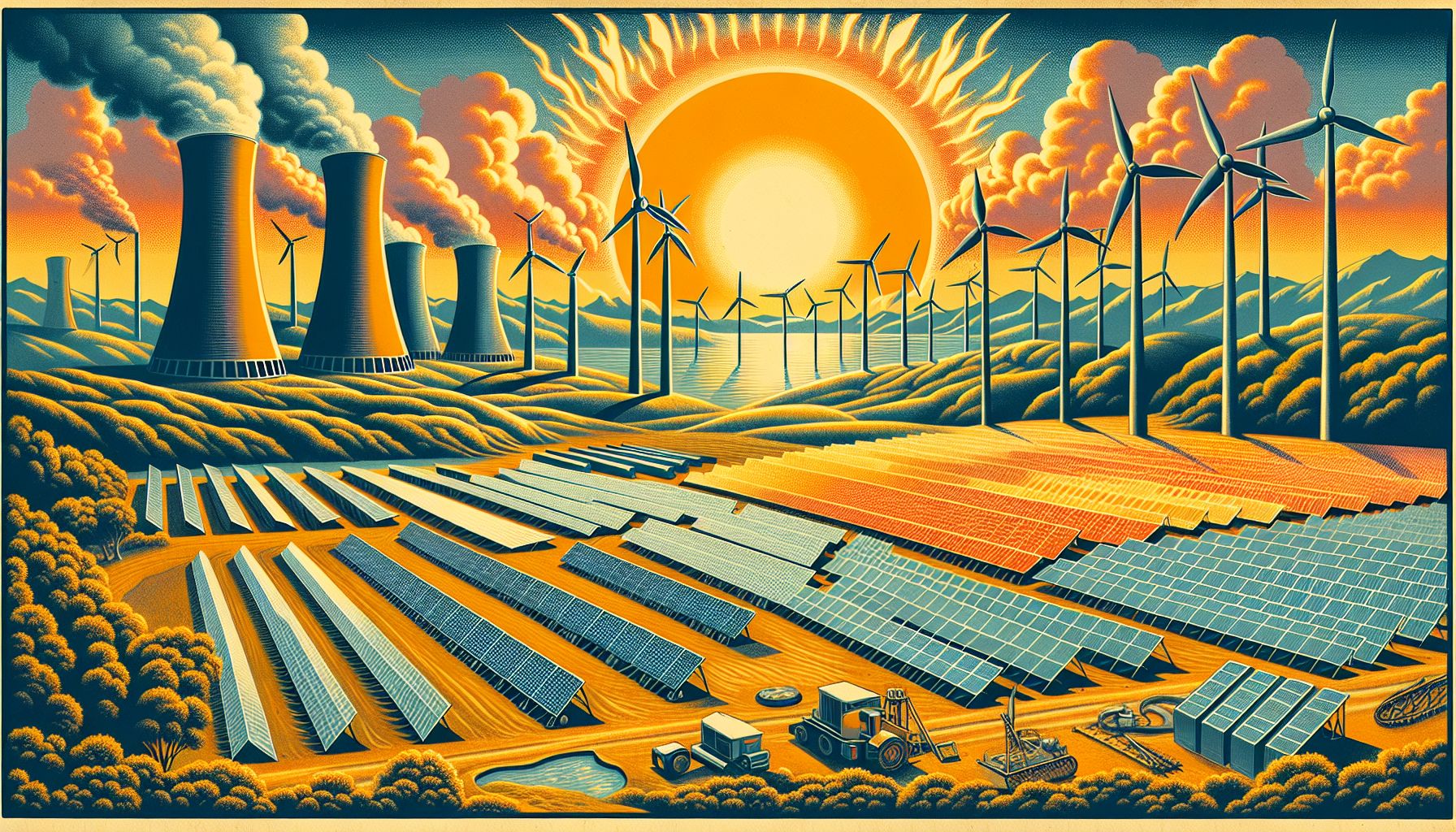solar and wind power set to surpass nuclear and hydro soon

solar and wind power accounted for 80% of new global power capacity in 2023 and are projected to surpass nuclear and hydro in the coming years, marking an historic energy transition.
Rapid Growth in Solar and Wind Power
The International Solar Energy Society (ISES) reports that solar and wind power together constituted 80% of global net power capacity additions in 2023. This remarkable growth is largely driven by significant advancements in solar and wind technologies. Solar power generation has increased ninefold over the past decade, reaching 1,500 TWh per year, while wind power has tripled to 2,300 TWh per year[1].
Forecasting Future Dominance
ISES projects that solar power’s annual growth rate of 22% will result in a doubling of its capacity every three years, potentially achieving 100,000 TWh per year by 2042. This would be enough to fully decarbonize the global economy[2]. Similarly, wind power is expected to continue its upward trajectory, becoming a cornerstone of global electricity grids alongside solar power.
Leading Countries and Regional Efforts
Countries leading the charge in solar and wind power generation per capita are predominantly in Europe, with Australia being a notable exception. Australia has demonstrated remarkable progress, transitioning from 75% fossil fuel generation to 18% and increasing solar and wind generation from 19% to 75% by 2030[3]. Middle-income countries such as Brazil and Chile also play a significant role, with 81% and 60% of their electricity coming from hydro, wind, and solar sources, respectively. These nations aim to reduce electricity prices and emissions through robust renewable energy policies[4].
Grid Stability and Investments
Concerns about grid stability in countries rapidly adopting renewable energy are being addressed through substantial investments in storage, transmission, and demand management. These measures are crucial for ensuring that the grid can handle the intermittent nature of solar and wind power and maintain reliable electricity supply[5].
Global Milestones and Future Outlook
In 2023, renewable power generated a record-breaking 30% of the world’s electricity, marking a critical turning point in the global energy landscape. China, Brazil, and the Netherlands have led the way in the rapid deployment of renewable power, with China alone accounting for 51% of new solar generation and 60% of new wind power[6]. This trend is expected to continue, as leaders at COP28 have pledged to triple renewable power capacity by 2030, reinforcing the role of renewables in achieving significant emissions reductions[7].

